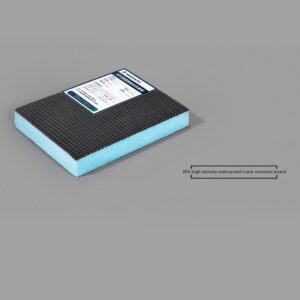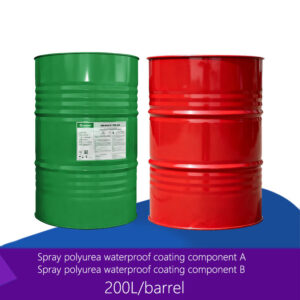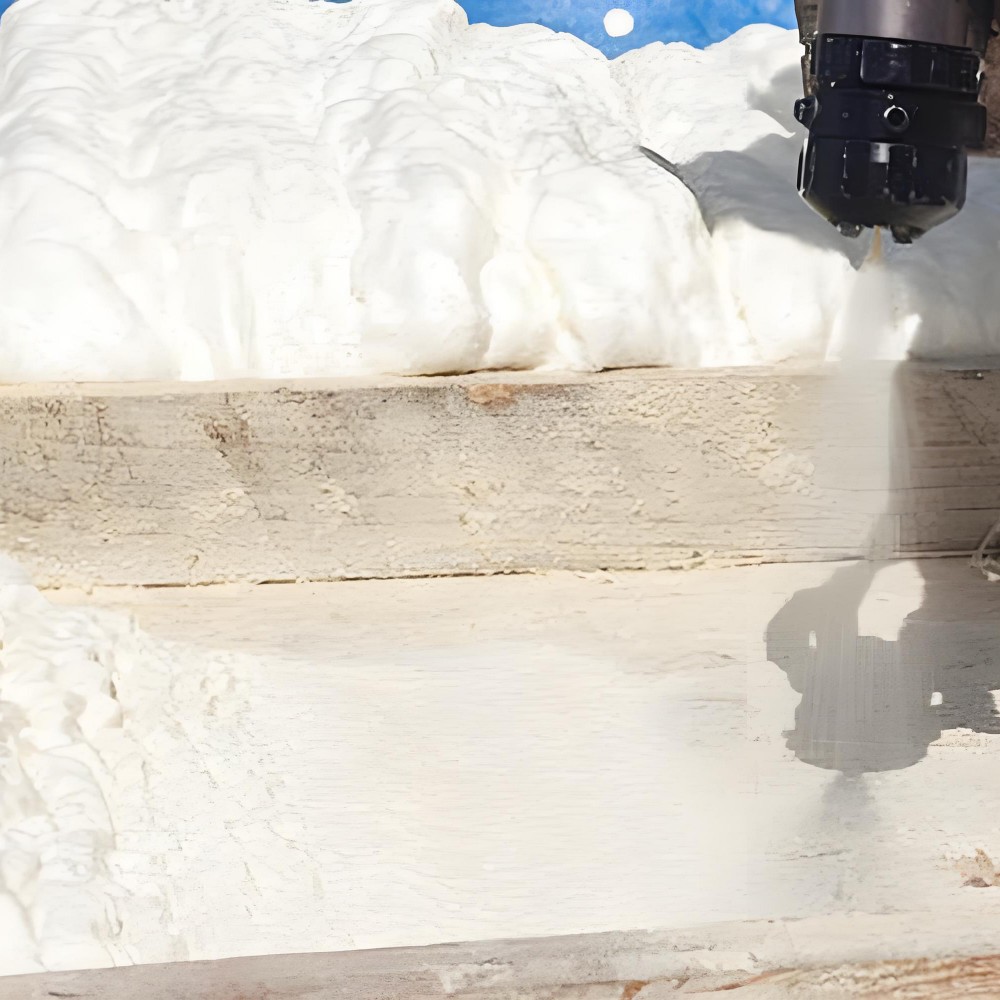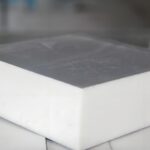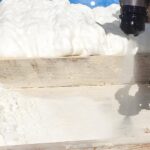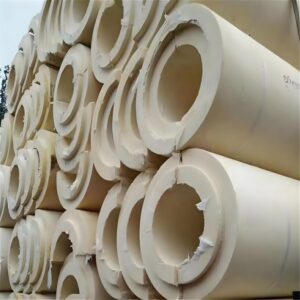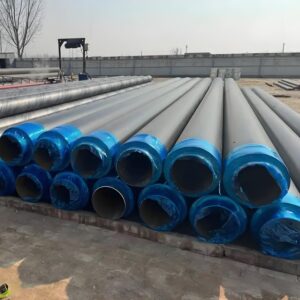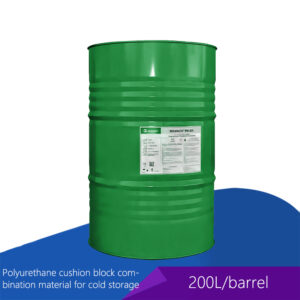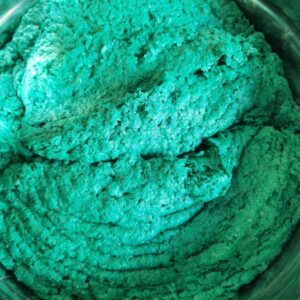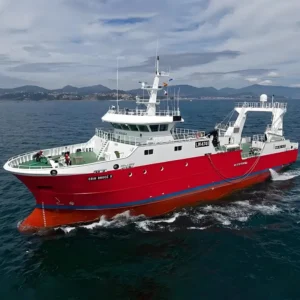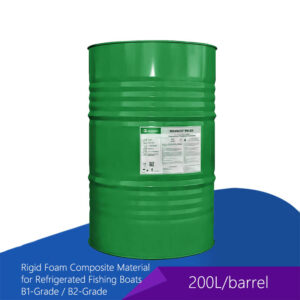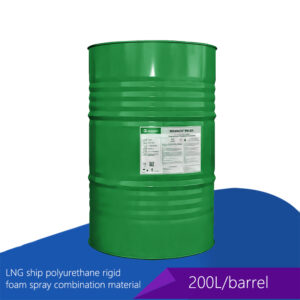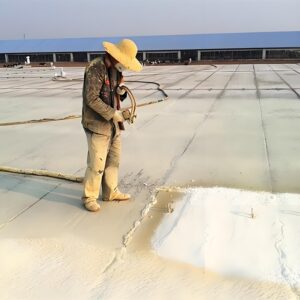Polyurethane Rigid Foam Compound Material,WANEFOAM 7002
WANEFOAM7002 is suitable for high-pressure continuous or intermittent production lines of polyurethane rigid foam panels, with high production efficiency. This
The foaming process of the system was smooth, and the produced products had good performance. The foaming agent used was HCFC-141b, and the core foam’s flame retardancy level was B2.
Description
1. Product Overview
Product Name: WANEFOAM 7002
Synonym: Polyurethane foam composite material
Application: Suitable for high-pressure continuous production lines or batch production lines of rigid polyurethane foam boards, with stable foaming process and excellent product performance. The finished products made from WANEFOAM 7002 are widely used as structural and thermal insulation materials in petroleum, chemical industry, construction, packaging, refrigeration, military, aerospace, transportation, industrial modeling, etc., especially in building wall and roof insulation.
Synonym: Polyurethane foam composite material
Application: Suitable for high-pressure continuous production lines or batch production lines of rigid polyurethane foam boards, with stable foaming process and excellent product performance. The finished products made from WANEFOAM 7002 are widely used as structural and thermal insulation materials in petroleum, chemical industry, construction, packaging, refrigeration, military, aerospace, transportation, industrial modeling, etc., especially in building wall and roof insulation.
2. Composition
It is a mixture with the following components:
| Component Name | Content (w/w, %) | CAS No. |
|---|---|---|
| Polyether/polyester polyol | 45-65 | 9082-00-2/32472-85-8 |
| Tris(1-chloro-2-propyl) phosphate | 10-20 | 13674-84-5 |
| 1,1-Dichloro-1-fluoroethane | 5-25 | 1717-00-6 |
| Tertiary amine catalysts | 1-5 | Mixture |
| Other additives | 1-10 | Mixture |
3. Physical and Chemical Properties
3.1 Basic Properties
- Appearance: Colorless or yellow transparent liquid; yellow or light yellow (typical value).
- Relative density (water=1): 1.1±0.1 at 25℃; 1.16±0.10 (typical value).
- Viscosity at 25℃: 50-400 mPa·s.
3.2 Free Foam Parameters
| Item | Index |
|---|---|
| Cream time | 10-15 s |
| Gel time | 45-75 s |
| Tack-free time | 55-120 s |
| Free foam density | 34-40 kg/m³ |
3.3 Physical Properties
| Item | Index |
|---|---|
| Density | ≥38 kg/m³ (overall density of foam products by high-pressure spraying machine under specified conditions) |
| Thermal conductivity | ≤0.024 W/(m·k) |
| Compressive performance (10% deformation) | ≥120 kPa |
| Dimensional stability (-30℃, 48h) | ≤1.5% |
| Closed cell rate | ≥90% |
| Water absorption | ≤4% |
| Oxygen index | ≥26% |
4. Hazard Identification
- Eyes: Slight irritation to eyes.
- Skin: Long-term or repeated contact generally does not cause skin damage (except for allergic individuals). Avoid contact if skin is damaged (e.g., scratches, abrasions). Contact with the material when heated at high temperatures may cause skin burns.
- Ingestion: Contains small amounts of amine catalysts; ingestion is harmful. Small amounts, with proper first aid, may not cause harm, but large amounts can be harmful.
- Inhalation: Inhaling vapors of fluorocarbons (e.g., 1,1-dichloro-1-fluoroethane) can affect the nervous system, causing rapid anesthetic effects. Large inhalation may accelerate heartbeat, disrupt regular heartbeats, and damage heart function. Excessive exposure can damage the central nervous system, leading to anesthetic symptoms.
5. Safety Measures
5.1 First Aid
- Eyes: If splashed, immediately rinse with plenty of water; continue rinsing after removing the material. Seek medical attention if necessary.
- Skin: Remove contaminated clothing and shoes, rinse skin with soap and plenty of water. Seek medical attention if adverse reactions occur.
- Ingestion: Seek medical attention immediately; do not induce vomiting unless instructed by a professional.
- Inhalation: Move to fresh air. Seek medical attention if severe.
5.2 Fire-Fighting Measures
- Hazardous combustion products: Incomplete combustion decomposes into harmful gases at high temperatures; complete combustion produces carbon oxides, nitrogen oxides, water vapor, ammonia, hydrochloric acid, etc. It is combustible and may aid in fire or explosion.
- Extinguishing media: Carbon dioxide, dry powder, foam. Do not use direct water jets as they may spread the flame; use mist water if no other media are available.
- Fire-fighting instructions: Evacuate people, isolate the fire area, stay upwind, and prohibit non-related personnel from entering. Avoid low-lying areas where harmful gases may accumulate. Cool containers and surrounding areas with water during fire fighting; transfer threatened barrels if safe.
- Protection for firefighters: Wear pressure self-contained breathing apparatus and fire-resistant clothing (helmet, coat, pants, gloves, boots).
5.3 Leakage Handling
- Small leakage: Rinse with water.
- Large leakage: Contain and recover; clean contaminated ground with water or detergents. Disposal of waste materials must comply with local environmental regulations.
6. Handling and Storage
6.1 Handling
- Polyols react with isocyanates; clearly distinguish and avoid contact to prevent uncontrollable reactions.
- Barrels containing the material are under pressure; avoid open flames, piercing, collision, or impact.
- Used in multi-component rigid polyurethane foam board continuous or batch lines. Check and calibrate flow delivery and mixing pressure of each component before use. During use, the temperature of laminator chain plates is preferably 60-70℃, and the temperature of upper and lower clean steel plates is 35-45℃. Corona treatment on upper and lower steel plates and glue spraying on lower steel plates are required before pouring; discharge temperature is 28-32℃.
6.2 Storage
- The material is hygroscopic; keep barrels tightly sealed.
- Store in a ventilated, cool place at 5-35℃, away from direct sunlight. Avoid long-term storage above 40℃ to prevent excessive volatile loss of foaming agents and performance degradation.
7. Exposure Control and Personal Protection
- Engineering controls: Ensure adequate ventilation.
- Eye/face protection: Wear goggles; use full face protection (goggles and mask) if vapors cause discomfort.
- Skin protection: Wear impermeable gloves and long-sleeved clothing. Clean with soap before eating, drinking, or smoking after work. Contaminated clothing must be cleaned and dried before reuse or disposed of harmlessly.
- Respiratory protection: Generally not required. Use respiratory protection in poorly ventilated, high-temperature environments or where atomized particles are present.
8. Stability and Reactivity
- Chemical stability: Stable under recommended storage conditions.
- Conditions to avoid: Storage above recommended temperatures may increase barrel pressure; avoid direct sunlight and open flames.
- Incompatible substances: Oxidizing agents, strong acids, isocyanates.
- Hazardous decomposition/polymerization: No hazardous decomposition under normal use and storage; no polymerization.
9. Ecological Information
- The physical foaming agent is HCFC-141b, with ODP=0.11 and GWP=300 (CO₂=1).
- Polyols are not easily biodegradable in strict experiments, but the material may undergo biodegradation under environmental conditions. Avoid release into water or soil.
10. Transportation and Packaging
- Packaging: 200L green steel barrels; 200kg/barrel.
- Comply with relevant transportation regulations.
11. Other Information
- Shelf life: 6 months under appropriate storage conditions; can be used after passing inspection if exceeded.
- Usage notes: Test before formal use to ensure suitability for specific production processes. The provided data are typical test values, which may vary slightly with environmental conditions and have no legal binding force. Specific guaranteed indicators are subject to quality certificates or supply contracts.
- Disclaimer: The information is based on current technical knowledge and experience for reference only. The company is not liable for indirect losses during production using the product. For more information, refer to the Material Safety Data Sheet or contact the customer service center.
WANEFOAM7002
Wanhua Energy-Saving Technology (Yantai) Co., Ltd.
All Rights Reserved. Confidential.
Wanhua Energy-Saving Technology (Yantai) Co., Ltd.
All Rights Reserved. Confidential.
More Similar Items
The Largest MDI Manufacturer and Polyurethane Raw Material Supplier
Additional information
| Weight | 25 kg |
|---|


